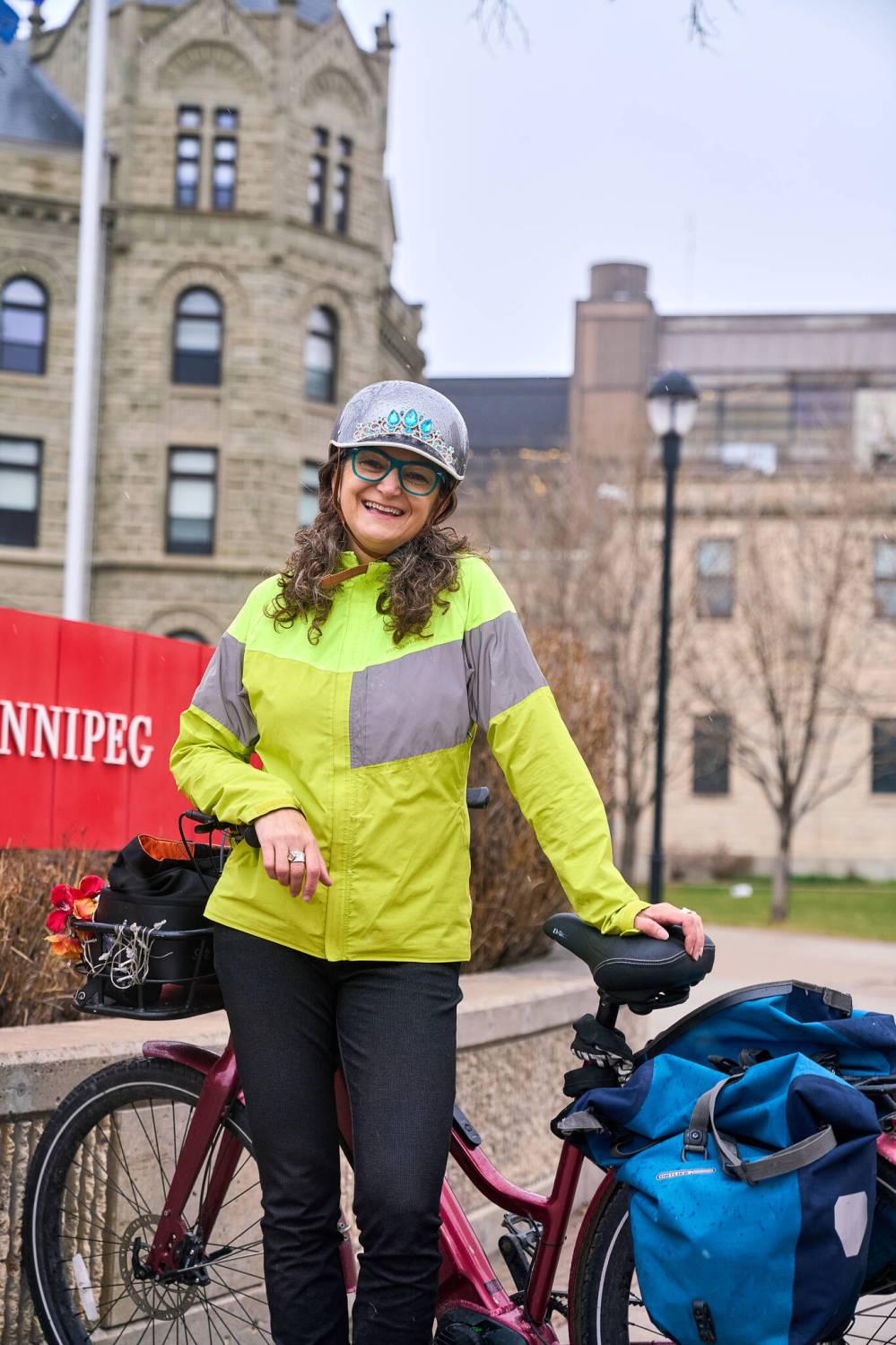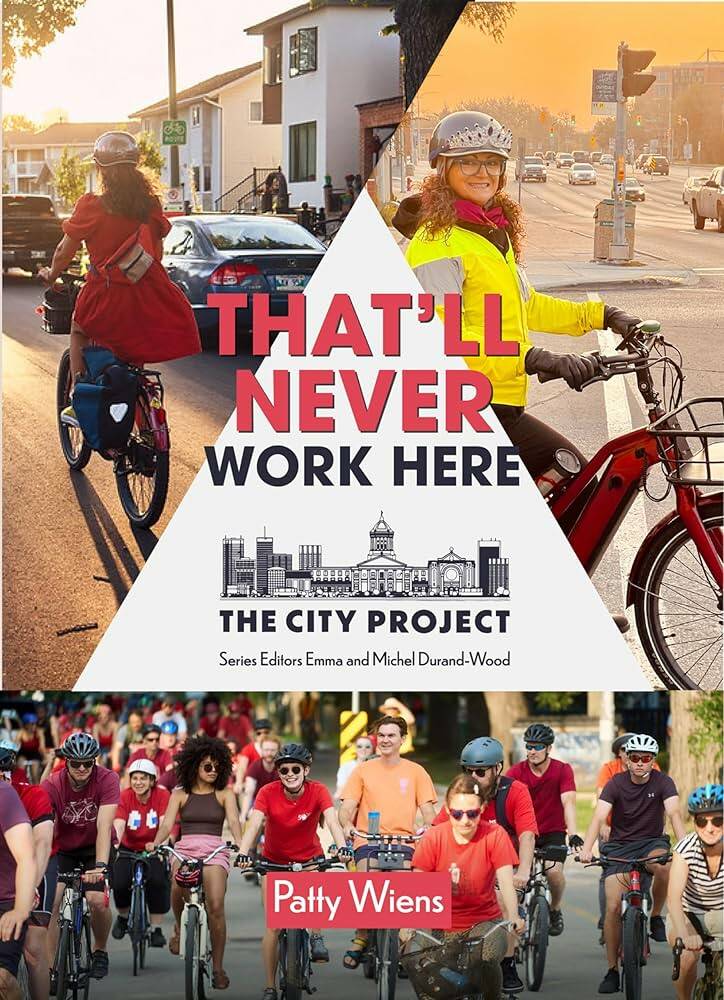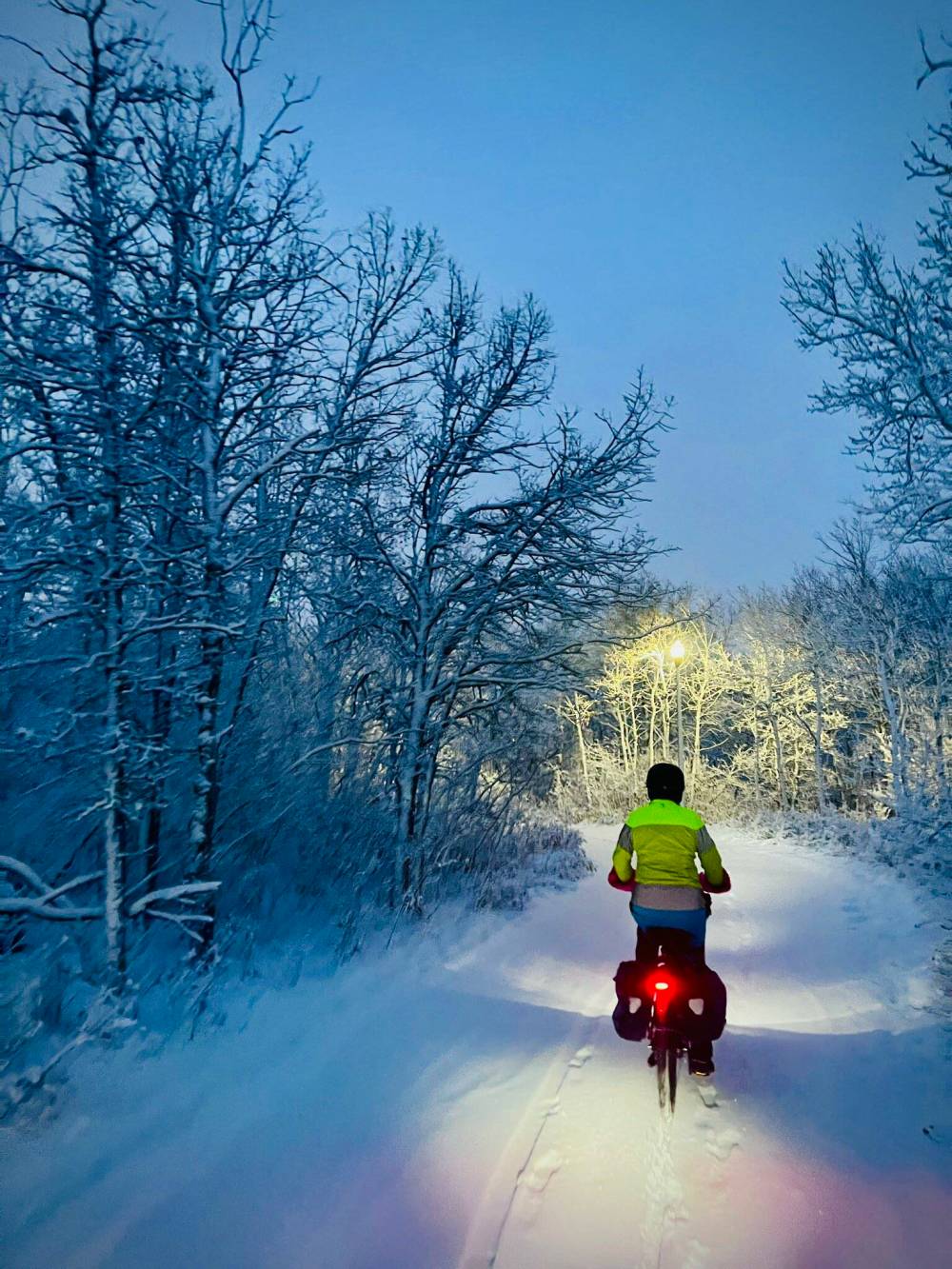Bicycles and icicles
It’s never too brisk to bike — once you get in gear with winter
Advertisement
Read this article for free:
or
Already have an account? Log in here »
To continue reading, please subscribe:
Monthly Digital Subscription
$0 for the first 4 weeks*
- Enjoy unlimited reading on winnipegfreepress.com
- Read the E-Edition, our digital replica newspaper
- Access News Break, our award-winning app
- Play interactive puzzles
*No charge for 4 weeks then price increases to the regular rate of $19.00 plus GST every four weeks. Offer available to new and qualified returning subscribers only. Cancel any time.
Monthly Digital Subscription
$4.75/week*
- Enjoy unlimited reading on winnipegfreepress.com
- Read the E-Edition, our digital replica newspaper
- Access News Break, our award-winning app
- Play interactive puzzles
*Billed as $19 plus GST every four weeks. Cancel any time.
To continue reading, please subscribe:
Add Free Press access to your Brandon Sun subscription for only an additional
$1 for the first 4 weeks*
*Your next subscription payment will increase by $1.00 and you will be charged $16.99 plus GST for four weeks. After four weeks, your payment will increase to $23.99 plus GST every four weeks.
Read unlimited articles for free today:
or
Already have an account? Log in here »
Excerpt from That’ll Never Work Here: Challenging the Myths Around Biking in a Winter City, by Patty Wiens (Great Plains Press). A book launch will be held Nov. 8 at McNally Booksellers. It is the second book in The City Project, which examines ways to create a happier, healthier more sustainable Winnipeg.
When someone asks me “How did you become a cycling advocate?” I usually say, “I rode my bike in winter one day and now I’m here.” Bicycle stories usually have a gap in the middle. There’s a well-known joke that says that the beginning of your life is all about bikes, then there’s a bunch of BS with cars in the middle, then you get older and get back to bikes.

A book launch for That’ll Never Work Here: Challenging the Myths Around Biking in a Winter City, by Patty Wiens (right), will be held Nov. 8 at McNally Booksellers.
That’s true for me.
After all the car BS, my kids grown up and out of the house, I moved to a more walkable neighbourhood and decided to get a bicycle so I could ride to work. I still had my car, of course. After all, you can’t live a car-free life in Winnipeg, with its harsh winters, poor transit system and urban sprawl. Car debt is a given, for which I budgeted accordingly:
- Rent
- Car (payment, insurance, gas, parking)
- Food
- Everything else
But the bike, a Norco commuter named Nora, kept calling me. I found reasons to choose her over the car. I started discovering bike lanes I didn’t know existed and calmed streets that connected some of the protected infrastructure.
In the spring of 2022, I moved in with my partner, Ian, and my 10-minute commute turned into 40 minutes on a good day, and sometimes 55 minutes on a day with a strong prairie headwind. I was proud of my long commute. I wasn’t fast and I didn’t ride on rainy days, but my co-workers still thought of me as radical for braving Winnipeg’s “dangerous streets.”
On days that I chose to bus or drive to work, the real reason I rode my bike became evident: I hated paying $12 a day for parking and the bus ride took longer than the bike ride. When the fall of 2022 came, I started preparing myself for putting Nora away, dreading being at the mercy of slow, unreliable transit or paying $280 a month for parking.
Once in a while, a co-worker would ask if I was one of those “winter cyclists,” to which I would reply, “I’m not that crazy — I’m Brazilian!” My previous winter commuting routine had been to wear ski pants, a parka and winter boots to walk to my pre-heated car. If I had to take the bus, I bundled up even more and considered wearing ski goggles just to wait at the bus stop. Winter cycling sounded like an absolutely insane idea. An idea for someone else, not for an almost 50-year-old Brazilian woman.
But I am also a person whose intensity is clear at first sight. My bike was becoming part of my identity, and I think Ian knew that when he suggested I just keep going as long as I could. “Don’t put the bike away just because the calendar says it’s time to do so. You never know.”
Having just returned from a trip to Amsterdam to visit my brother in the summer, new raincoat in hand and a renewed passion to do everything by bike, I agreed and kept going. I could hear my Dutch sister-in-law saying, “There’s no bad weather, just bad clothing.” Yeah OK, but you don’t know Winnipeg winters, I thought to myself.
I began to research on YouTube, watching every video I could find on winter cycling in Canada. There wasn’t much — there were no women in that space, and nobody my age. I saw a lot of Lycra guys in the U.K., calling rainy weather “winter,” and I saw some videos of people riding in the snow. But when it came to talking about “how to” winter cycle, the closest thing I found to my demographic was this man called Tom Babin out of Calgary, who had a YouTube channel called Shifter. I watched all his winter videos, studied his methods, and thought that it might just be possible for me to do it too.

When the first snowfall came, I got all dressed and rode my bike to the neighbourhood mall to see if I could make it. I had no special tires, too many clothes and a touch of stubbornness. It was fine. In fact, it was fun.
The next day, I decided to try going all the way to work. My 40-minute commute turned into an hour, and I got there all sweaty, but happy. I walked around the office with my high-viz, makeshift winter cycling gear and helmet, ready to brag to everyone that I was one of those crazy people, one of those winter cyclists.
But there was no one in the office yet — they were all stuck in traffic, which is always the worst after the first snowfall.
If I had to pick a day, I would say that this was the day that changed everything for me. Ian was eager to hear all about it. He waited excitedly for me to text him when I got to work and was waiting by the door when I came home.
I kept researching how to stay warm on my long commute and Ian pointed me to a Discord server started by a Winnipeg cyclist named Andrew. The server was dedicated to anyone using the bike for transportation or recreation — what I like to call the bike community in Winnipeg. The (mostly) guys on there were quick to help, offering tips, tricks and asking if I wanted to borrow their bikes.
My commute was long, and I was struggling with the balance of staying warm (but not too warm), battling the wind and dealing with the lack of snow clearing on the path that had been my bike highway and safe haven in the warmer months. Was I the only one going through this? I wondered who else in the world had the same questions, challenges and issues.
So, I took to X (Twitter, at the time) and I asked my handful of followers the following questions:
- Do you ride your bike in winter?
- How long is your commute?
- Where do you live?
- What are your biggest hurdles?
- What are your favourite accessories?
My feed blew up and I gained thousands of followers overnight. These winter cycling people were passionate, fanatical and bent on getting more people on bikes in winter.
As my algorithm started to fill up with bike things, I started to notice that we also shared one more thing in common: a feeling that we didn’t matter to decision-makers. Our safety and our concerns were not seen to be as important as those of drivers. I saw mostly men in this space, and they were experiencing something that women experience just by existing: neglect, rage and a feeling of not being welcome in a space.

Wiens found winter cycling people were passionate, fanatical and bent on getting more people on bikes in winter.
I wondered if switching to an e-bike would make a difference in dealing with the Prairie winds and cold, so I began researching this new topic and found that again, there were even fewer content creators in that space.
There were no women talking about riding an e-bike in winter. So, Ian and I got e-bikes and decided we would document my journey as I learned to ride my e-bike in winter. Real winter, not that rainy U.K. stuff.
I decided that was going to be the purpose of my YouTube channel: to show people how an e-bike made winter cycling easier and more accessible and hopefully encourage more women to do it. As I shared my videos on social media, I slowly gained a local celebrity status.
I can’t tell you why that happened, but I think that being a Brazilian woman in her 50s trying and succeeding at winter cycling and being super vocal about it had something to do with it. I wasn’t ashamed to look ridiculous on my social media, and I had a knack for saying what people were thinking. I didn’t care about likes and follows, I just wanted more bike lanes, safe streets and a city that allowed women to feel on bikes the way men feel in big trucks: powerful and invincible.
Or at least safe.

